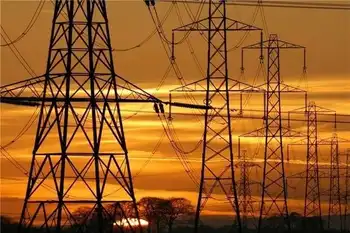Firms working on lowering solar energy costs
TOLEDO, OHIO - One piece of the American effort to find a way to make solar energy cheap enough that everyone will want it is unfolding in a modest redbrick building in this Midwestern city once known as one of the nation's top makers of glass.
Xunming Deng, a physicist, started a solar company in Ohio eight years ago as a spinoff from his research at the University of Toledo. He's attracted $40 million in venture capital, and designed and purchased manufacturing equipment. He now thinks that his Xunlight Corp. is on the brink of profitability and fast growth. It expects certification this spring and is getting ready to ramp up production.
Deng's story reflects one of the innovative approaches that U.S. thin-film photovoltaic solar companies are taking to bring down the costs of solar installations for homes, businesses and utilities. All aim for a mass market with economies of scale that make solar energy comparable in price to energy from fossil fuels.
Several of these companies are in Toledo, part of the legacy of the late Harold McMaster, a glass innovator who started a solar company that later became First Solar, which now employs about 1,000 people just outside Toledo.
"The way I envision it is that someday solar will penetrate the market and go to everybody's home," much the way cell phones and personal computers did, Deng said. "I feel that one day our energy platform will be much more renewable, and we want to be a big part of it."
The widespread use of solar that Deng envisions could help the U.S. reduce emissions of heat-trapping gases from coal and natural gas. It also could help provide clean energy that electrifies vehicles, reducing the country's $350 billion annual bill for foreign oil.
Although solar energy today provides only 1 percent of U.S. electricity, it's growing quickly, adding jobs in factories such as Deng's and at companies that install the equipment.
"Everybody's trying to get the upfront costs down," said Monique Hanis, a spokeswoman for the Solar Energy Industries Association. A solar home system today costs $25,000 to $40,000 before tax credits and other subsidies, Hanis said.
"Once you have the technological leadership, once you have the innovative manufacturing process that drives the cost down... we can make more," Deng said.
Deng's work is in thin-film photovoltaic solar, an area in which there's been a great deal of innovation in recent years. Thin-film is an alternative to the crystalline silicon solar cells commercialized in the U.S. in the 1950s, the kind typically seen powering highway signs and the most widely used solar panels today.
Thin-film cells cost less to make. They're essentially a layer of semiconductor material on a thin base of metal, plastic or glass.
Xunlight's thin-film cells are light and flexible, making them easier to install and ship.
The amount of material used in the active layers of thin-film solar cells is a tiny fraction of what goes into a conventional solar cell, so the material costs are much lower, said Joe Verrengia, a spokesman for the National Renewable Energy Laboratory, which is working with companies and doing its own work on thin-film research and development.
Xunlight grew with the help of grants, loans and business help from Ohio's Department of Development.
Ohio has one of the most ambitious renewable-energy requirements of any state: Twenty-five percent of its electricity must be produced by renewable sources by 2025. Of that total of 6,000 megawatts, 800 must be solar. The policy will make Ohio one of the top markets for solar, said Nadeane Howard, the director of the Energy Resources Division of the Ohio Department of Development.
Deng's story ties into Toledo's history as the "Glass City," a center for glass making.
Deng left his native China in 1985 and earned a Ph.D. in physics at the University of Chicago, where he researched amorphous silicon solar cells. He joined the faculty of the University of Toledo, attracted by its research equipment for amorphous silicon solar power. The university had purchased the equipment with a gift from Toledo's McMaster.
McMaster, a physicist, started in Toledo's glass business and worked out a way to bend and temper glass. He and a fellow inventor formed Glasstech, a company that made the machines that made tempered glass. In 1984 he formed Glasstech Solar, which made solar cells using a coating on glass in Colorado, and later he started Toledo's first solar company.
A group of investors took control of that solar company in 1999 and renamed it First Solar, now the world's largest maker of thin-film solar modules.
First Solar's rapid growth was largely the result of Germany's energy policy, which pays solar producers a subsidized price for their electricity as a way of encouraging alternative energy sources.
First Solar sold 90 percent of its products outside the United States last year, but it sees the U.S. market growing. Twenty-nine states and Washington, D.C., have requirements that utilities get part of their electricity from renewable energy.
The company is developing utility-scale solar farms in California, New Mexico and Nevada.
It uses cadmium telluride to make its thin-film cells. "For us, that's the big factor to lower the costs" compared with first-generation solar, company spokesman Alan Bernheimer said. Its manufacturing process is another key.
The company's cost to produce solar modules was more than $3 per watt in 2004 and now is 84 cents per watt, Bernheimer said. The company projects that costs will drop still further in the next few years. Installation costs also have declined steeply, Bernheimer said.
First Solar predicts that it will match the cost of conventional electricity in four to five years.
The company produced about 100 megawatts of cells, mostly in Ohio, in 2006. Last year it was up to 1,282 megawatts, mostly made in Malaysia, with the rest in Germany and Ohio. It's the only one of the top 10 solar photovoltaic companies in the world that has headquarters in the U.S.
Another Toledo company, Willard & Kelsey, also uses cadmium telluride. CEO Michael Cicak said the company's manufacturing technology would allow it to produce solar panels faster and more efficiently than its competitors could. The company is named for a corner in the neighborhood in Toledo where Cicak and another company officer grew up. It plans to begin production in July.
Cicak and the other founding members of Willard & Kelsey previously worked for McMaster's solar company.
"We're going to stay right here, and we'll ship to Asia," Cicak said.
Related News

BC Hydro suspends new crypto mining connections due to extreme electricity use
VANCOUVER - New cryptocurrency mining businesses in British Columbia are now temporarily banned from being hooked up to BC Hydro’s electrical grid.
The 18-month suspension on new electricity-connection requests is intended to provide the electrical utility and provincial government with the time needed to create a permanent framework for any future additional cryptocurrency mining operations.
Currently, BC Hydro already provides electricity to seven cryptocurrency mining operations, and six more are in advanced stages of being connected to the grid, with a combined total power consumption of 273 megawatts. These existing operations will not be affected by the temporary ban.
The…




